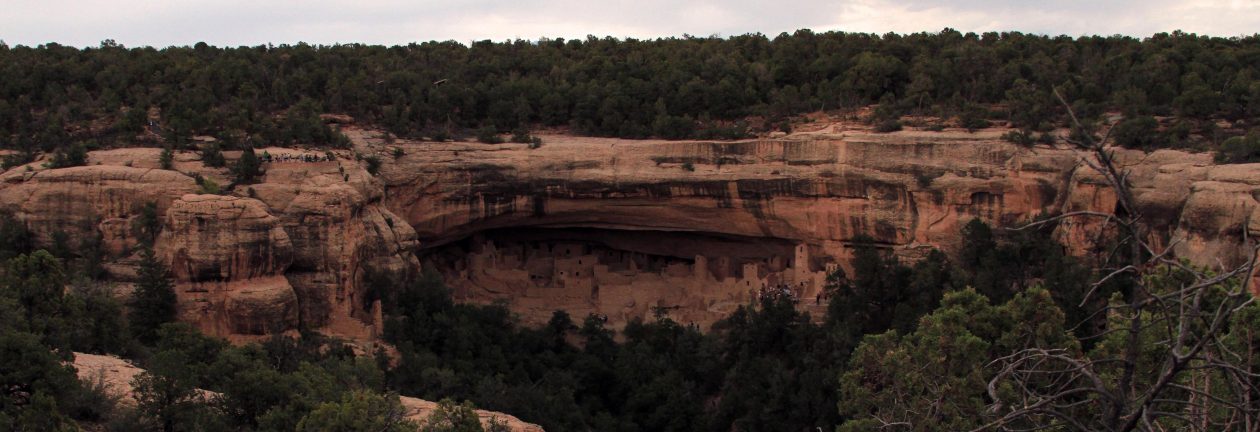THIRTY-FOURTH MOVEMENT: GREECE
Thessaloniki, Greece
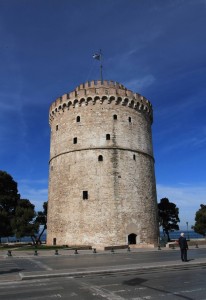
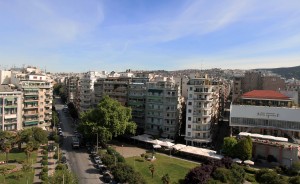
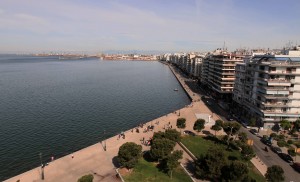
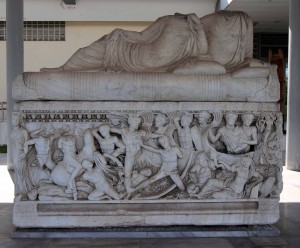
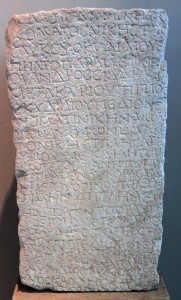
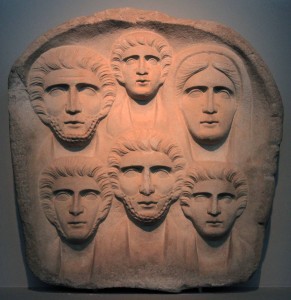
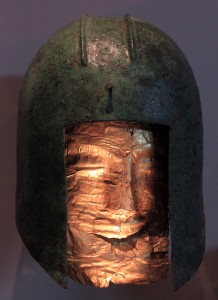
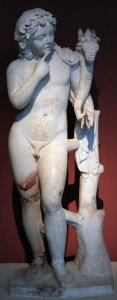
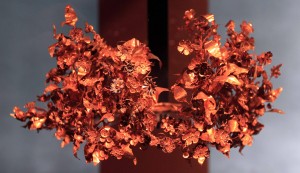
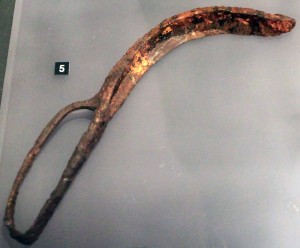
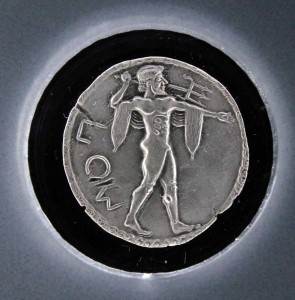
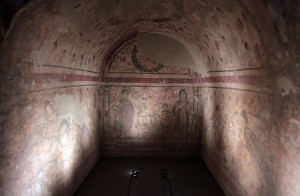
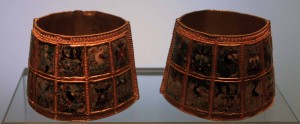
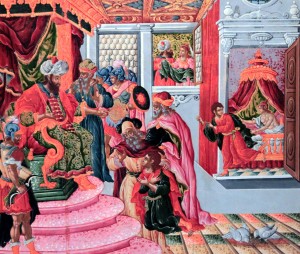
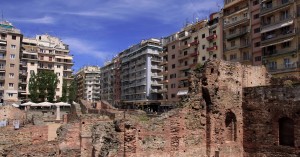
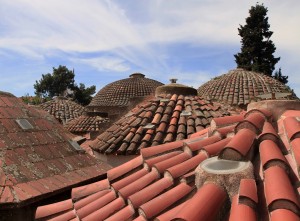
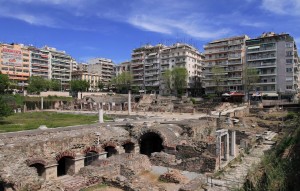
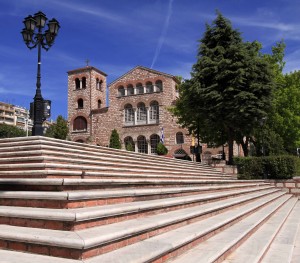
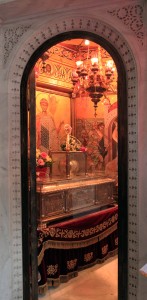
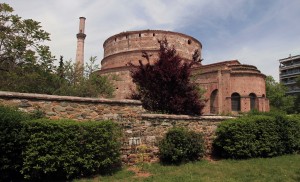
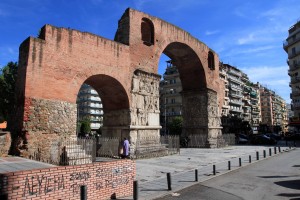

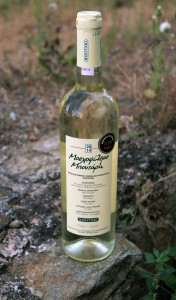
I woke up around 06:00 in the bus on the way to Thessaloniki. The bus then stopped at 06:20 at a roadside rest stop for fifteen minutes. I took the opportunity to look around and view the Greek countryside and mountains, which was a lush green, covered in bushes and small trees. We then continued on our journey and finally reached the bus station in Thessaloniki at 08:00. From there, I rode in a van that was shuttling passengers from the station to the bus terminal that all local buses travel to. I then bought a ticket and rode a local bus in to the center of Thessaloniki. I exited this local bus at a familiar landmark (the White Tower) and walked from there to the hostel I reserved a bed at. I reached the hostel, checked in, and stored my bags in the luggage/cleaning/toilet closet since the bed and dorm room would not be available to me until after 14:00. I then left the hostel and started exploring Thessaloniki. I first walked to the White Tower, which was constructed by the Ottomans some time after the army of Sultan Murad II captured Thessaloniki in 1430 AD; the tower was originally constructed to fortify the city’s harbor, but was later turned in to a notorious prison and scene of mass executions during the period of Ottoman rule; Greece gained control of the city in 1912 AD, and now the tower has become a symbol of the city. I approached the tower and walked around the outside before entering inside, paying for my entrance ticket, and exploring the different exhibitions on the history of Thessaloniki; unfortunately, almost everything was in Greek and I was not able to read the various placards (they did have audio guides in English available, but I had turned in down in favor of a quick visit). I climbed up the tower’s spiral ramp and reached the top, where I was able to go outside and view the city and its waterfront. I then returned down the spiral ramp and exited the tower. Next, I walked to the Archaeological Museum of Thessaloniki. I paid the entrance fee and walked around the various exhibition rooms, viewing each artifact on display. Inside, were many statues, mosaics, perfume vessels (there were glass vessels shaped like birds that required the user to break off the tip in order to use the perfume contained within), flasks, oil lamps, pottery, funeral stelae, sarcophagi, friezes, gold wreaths, jewelry, helmets, swords, coins (some were arrow-shaped, from the sixth- and fifth-centuries BC), etc. There was a lot to see and when I was done, I walked to the nearby Museum of Byzantine Culture, which was organized in to eleven rooms and had artifacts and examples from early Christian churches, early Christian cities (with tombs), icons, Byzantine castles, and so on. Both museums were worth a visit and there was a discount if you bought a combined ticket like I did. I then walked to Navarinou Square, which contained the ruins of an old Roman Imperial palace. Next, I walked to the Hagia Sophia in Thessaloniki, but it was closed for midday; so, I walked on to the historic site of the Paradisos Baths (“Bei Hamam”), but it was closed and had been for the last two years (Greece ain’t doin’ so well right now); however, I was able to enter a nearby restaurant and get a good view of the bathhouse’s roof from the restaurant’s second floor. I continued on my trek throughout the town and walked to the Ancient Agora of Thessaloniki; this too was closed, but it didn’t matter since the ruins were exposed for all to see. I walked around the ruins, viewing the agora and its odeon. Then, I walked to the Church of Saint Demetrius (“Hagios Demetrios”), which contains the relics of Saint Demetrius, who is often depicted on horseback spearing the gladiator Lyaeos, who according to history was responsible for killing many Christians (Saint George, that other popular Orthodox Saint, is frequently depicted spearing a dragon whilst on horseback; both have been juxtaposed together in art as well). I entered inside the church, which owes its present form to construction dating to the seventh-century AD, and wandered around, making sure to visit the small shrine inside the church containing the remnants of St. Demetrius. After viewing the inside of the church, I walked back outside and out west to the railway station (about 1,600 meters away). I reached the station and bought a train ticket for the next day, to Kalabaka (also called “Kalambaka”) for a 15:00 departure. I then walked back to the city, passing by the old city walls, before finally reaching the Rotunda, which was built during the reign of Galerius Caesar (around 306 AD) as a temple; later it became a Christian basilica, then a mosque, and finally a Christian church again, before becoming an archaeological site. The Rotunda was a fine looking building (also right next to the hostel I was staying at), but it was closed for the day and would remain closed through the next day, which was a Monday, when almost every tourist site closes down for the week. I walked around the Rotunda and then walked to the Arch of Galerius, which was built in 299 AD and dedicated in 303 AD to celebrate the victory of the tetrarch Galerius over the Sassanid Persians and capture of their capital Ctesiphon in 298 AD. After viewing the ancient arch, I walked to a nearby market and bought a bottle of water and a bottle of Greek white wine made from Moschofilero grapes. I then returned to the hostel, grabbed my bags from the storage room, received the keys to the dorm room, and moved my bags up to the room. Next, I put the water and wine in the refrigerator, and took a refreshing shower. I then went out to eat dinner and found a decent restaurant where I had sweet and sour chicken souvlaki, fried anchovies (this was a mistake – in my mind, I imagined fresh anchovies, lightly pan fried, and free of bone; instead, I received a plate with a pile of far too many anchovies, complete with all bones intact, and deep fried . . . it was kinda disgusting), and a lemonade. After dinner, I returned to the dorm room in the hostel, pulled out my laptop, worked on the website, and drank the bottle of Greek white wine that I had bought earlier, which tasted of citrus flavors (oranges and lemons). Eventually, I went to sleep after finishing the bottle and what I was doing.
